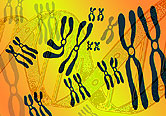
THURSDAY, July 1 (HealthDay News) — A gene that regulates human brain development has been identified by U.S. researchers.
At the earliest stages of embryonic development, the Pax6 gene appears to direct undifferentiated stem cells into becoming all the many types of cells that make up the brain and spinal cord, said the University of Wisconsin-Madison team.
The finding is an important first step toward being able to create customized brain cells that can be used for research, to develop new models for disease or possibly one day to treat brain diseases such as Parkinson’s or amyotrophic lateral sclerosis (ALS), the scientists said.
“This is a well-known gene. It’s been known for a long time from work in mice and other animals, but what Pax6 does in human development isn’t very well known,” neuroscientist Su-Chun Zhang said in a university news release.
In animals, the gene plays a role in the development of the eyes and is seen in some neural cells. In their study of human cells, Zhang and his colleagues found Pax6 in virtually all of the cells of the neuroectoderm. This structure appears early in embryonic development and produces the two primary forms of brain cells — neurons and glial cells — as well as the hundreds of cell subtypes that make up the human brain.
“The fact that Pax6 is uniformly expressed in all human neuroectoderm cells was a surprise,” Zhang said. “This is a phenomenon that is a departure from what we see in animals. It seems that in the earliest stages of development, human cells are regulated by different processes.”
The researchers said that the findings, published July 1 in Cell Stem Cell, may explain why the human brain is larger and, in many ways, more advanced than brains in other species.
More information
The National Center for Infants, Toddlers and Families has more about brain development.

